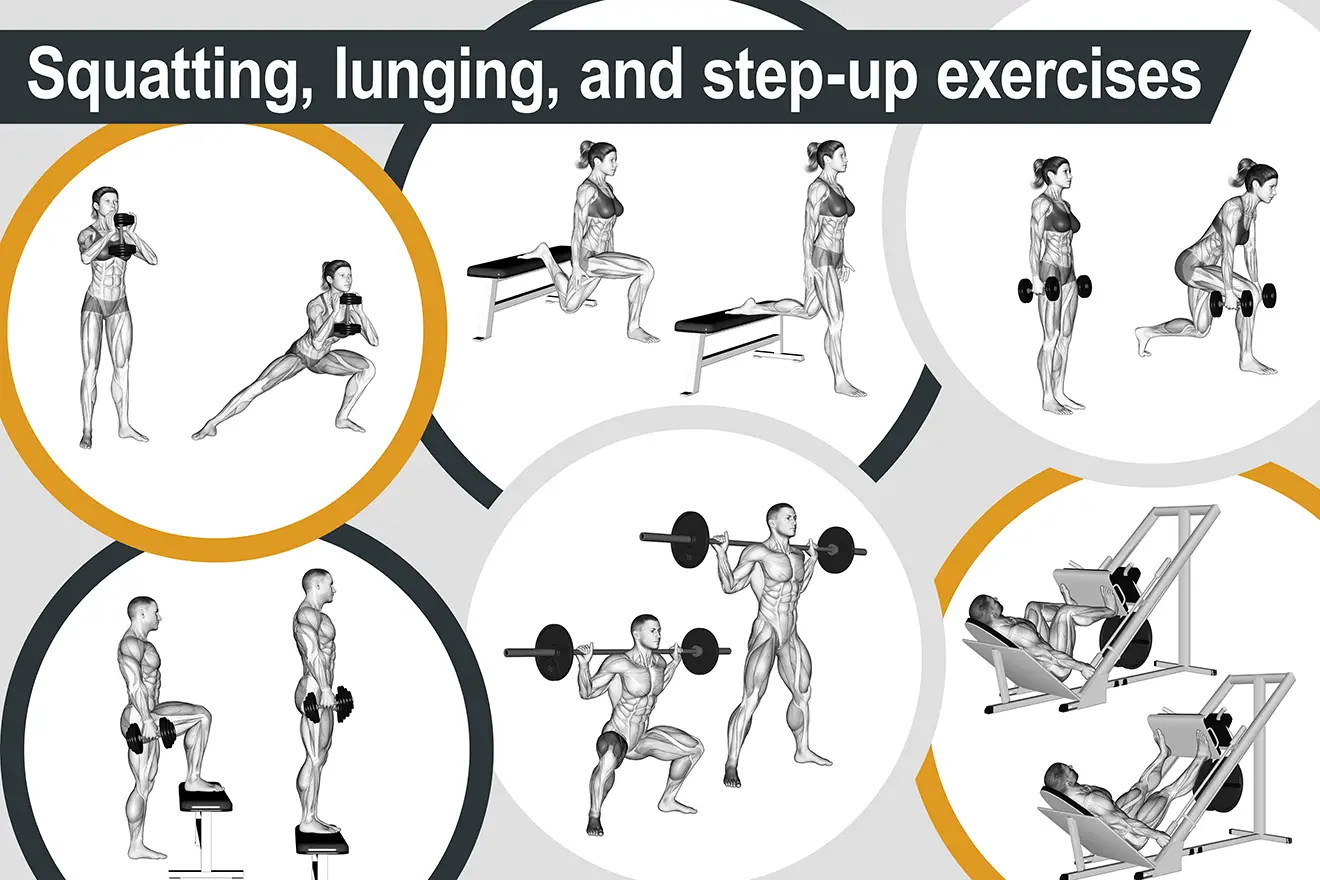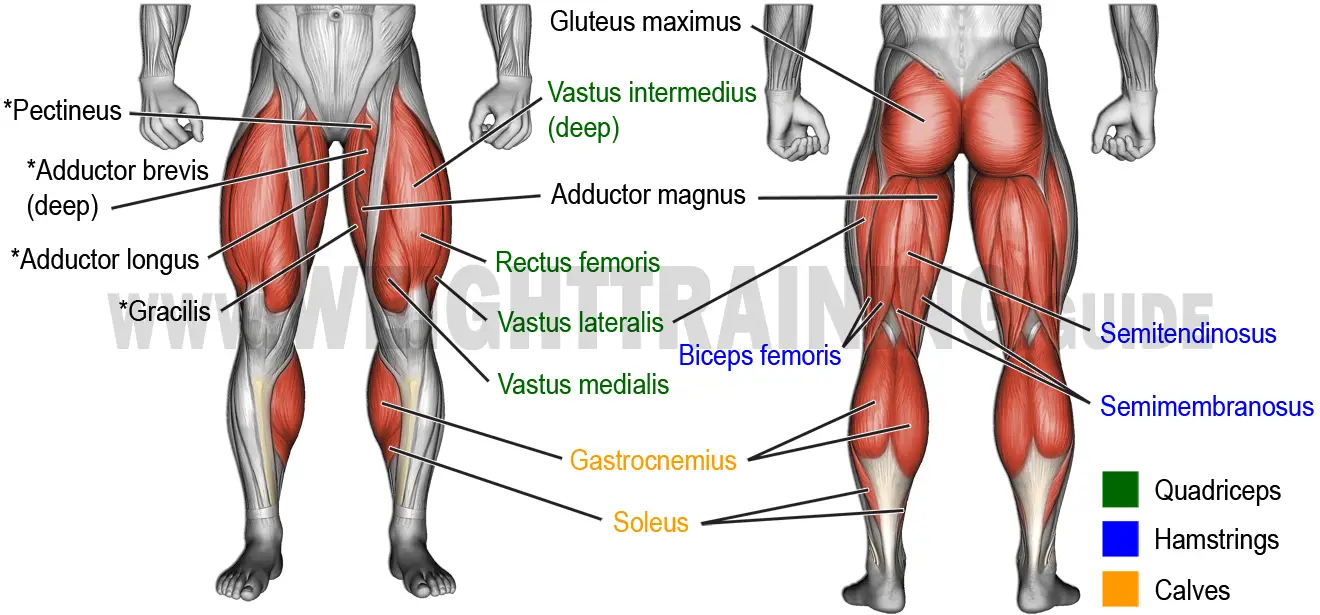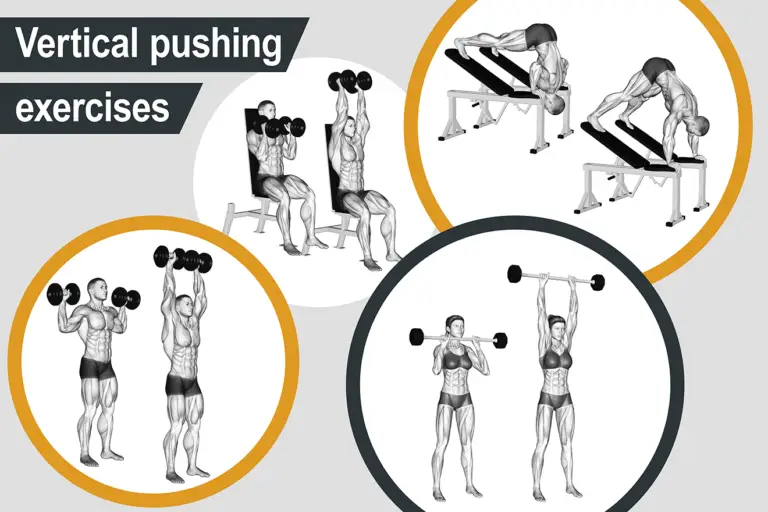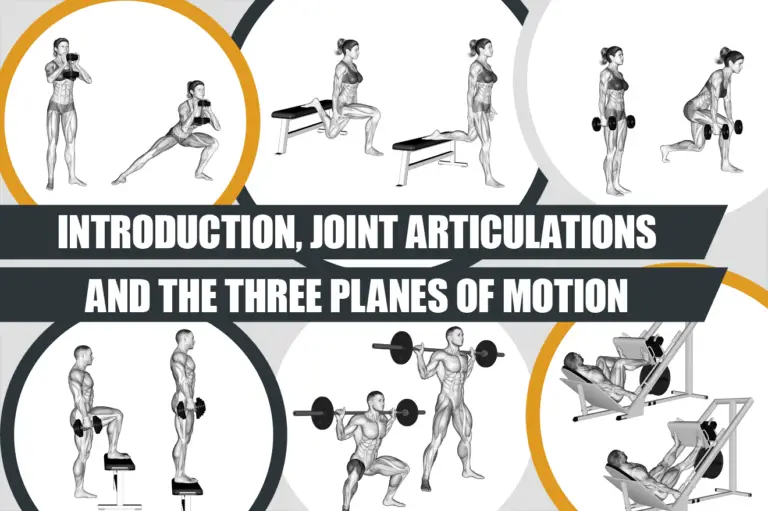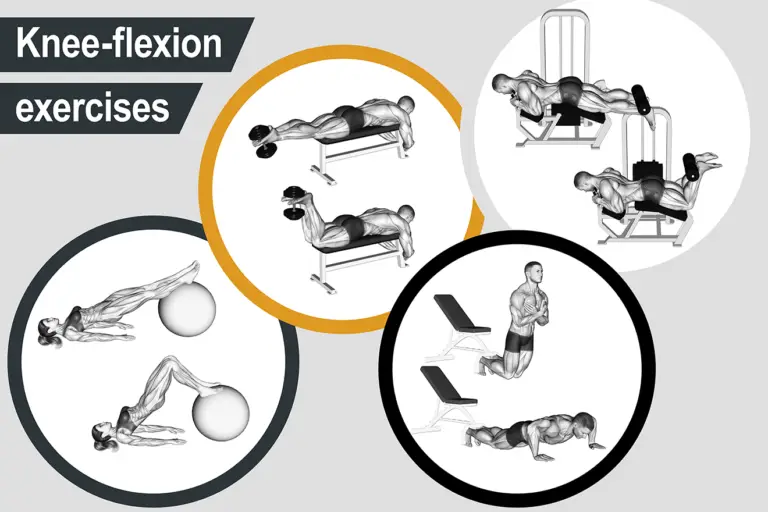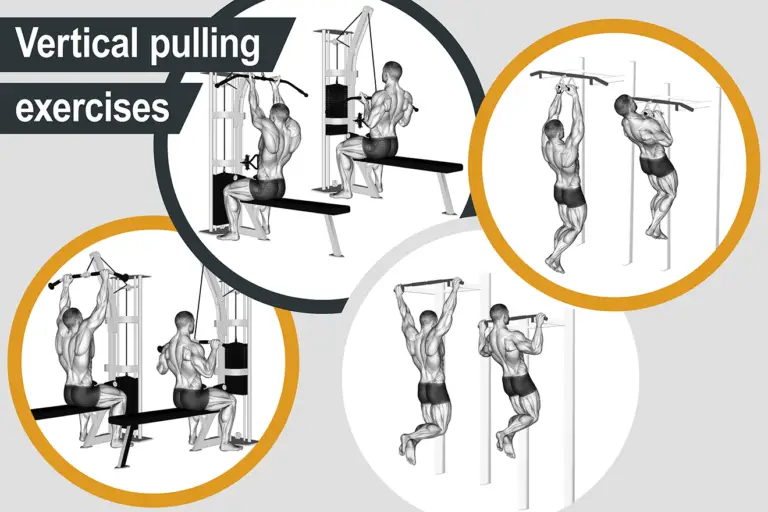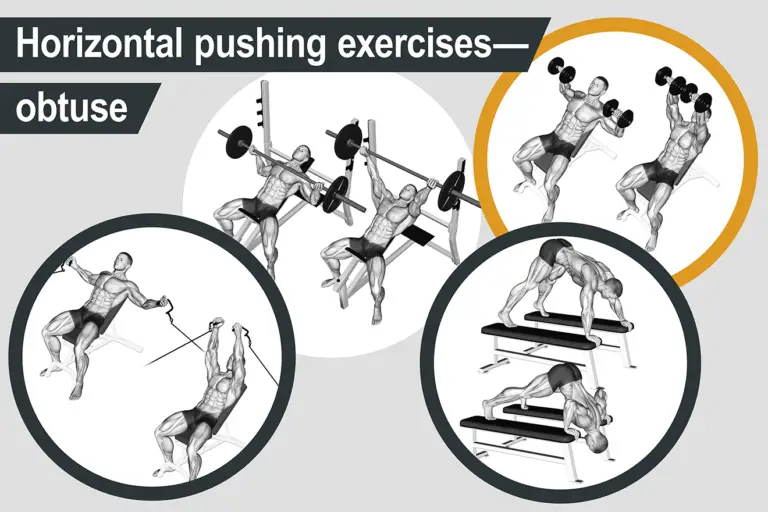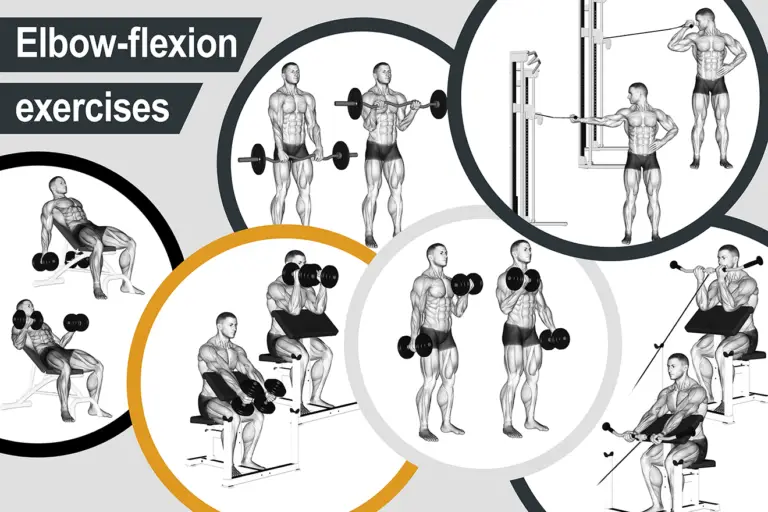Squatting, lunging, and step-up exercises
Movement patterns and classification
Squatting, lunging, and step-up exercises (for example, Figure 1) are primarily characterized by knee extension, but they also include hip extension, ankle flexion (also known as plantar flexion), and sometimes hip adduction if the legs are wide apart, such as with the barbell sumo squat and dumbbell side lunge (Figure 1, A and B, respectively). Therefore, all squatting, lunging, and step-up exercises are classified as compound.
Squatting exercises involve flexing your hips and knees and descending into a squatting position with your torso upright and feet level, before returning to a standing position by extending your hips and knees. The exercises can also be performed unilaterally (one leg at a time), such as with the Bulgarian split squat (Figure 1, C). The leg press (Figure 1, E) counts as a squatting exercise.
Lunging and step-up exercises are unilateral. Lunging exercises involve lunging (taking a large step) either forward, backward, or sideways, while step-up exercises involve stepping up and down off a platform.
Figure 1. Examples of squatting, lunging, and step-up exercises. A. barbell sumo squat; B. dumbbell side lunge; C. Bulgarian split squat; D. dumbbell forward-leaning lunge; E. sled 45-degree leg press; F. dumbbell step-up.
Muscle activation
Although they may seem quite different, all squatting, lunging, and step-up exercises target your quadriceps and synergistically activate your gluteus maximus, adductor magnus, and soleus (Figure 2). They also synergistically activate your hamstrings and gastrocnemius, though to a lesser degree. In fact, your hamstrings mainly act to stabilize your knee.
Exercises that involve a wide stance, such as the barbell sumo squat and dumbbell side lunge (Figure 1, A and B, respectively), also synergistically activate your remaining hip adductors. These are your adductor longus, adductor brevis, pectineus, and gracilis.
Note that heavy barbell squats can significantly activate your erector spinae. However, your erector spinae act as stabilizers, not as synergists.
Figure 2. Main muscles activated by squatting, lunging, and step-up exercises. *A synergist only in exercises that involve a wide stance, such as the barbell sumo squat.

